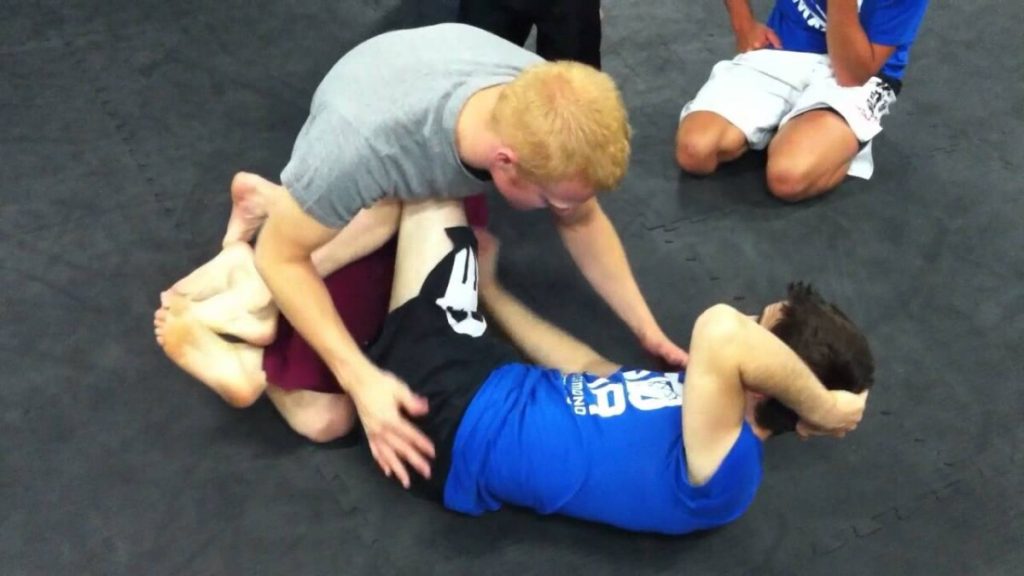Z Lock Leg Attack: Brazilian Jiu-Jitsu is practised nowadays with a wide range of techniques that aim to work every area of the body. Leglocks have become increasingly popular throughout time, and this has helped to take the sport to new and higher levels. What was before a taboo method became a platform for creativity.
The Z Lock is one such move that has gained popularity in the grappling scene. This submission has caught the attention of grapplers all over the world and is currently seen in several high-profile events, while not being as common as its contemporaries. We’ll look at what makes the Z lock leg attack a potent assault today.
The Z Lock’s Mechanisms
The Z Lock is a leg move that twists to strike the knee of the adversary. The fundamental method of the technique is to trap the opponent’s leg in such a way as to apply extreme pressure to the knee joint, especially the ligaments. The legs are positioned in a distinctive way that, from certain perspectives, makes them resemble the letter “Z,” hence the name “Z Lock.”
You must first use a type of leg entanglement to hold your opponent’s leg and bend their knee in order to execute the Z Lock. Next, with one leg under the calf and the other over the thigh, you need to utilise your legs to sandwich the opponent’s leg. The attacker can cause an excruciating submission on the opponent’s knee by exerting pressure and pushing the leg to bend laterally, forcing a tap. We will discuss the specifics shortly.
You might also interested in reading this: How To Become Expert At BJJ Long Step Pass?
The Z Lock in Operation

Gustavo Gasperin from the MMA Leech YouTube channel explains the fundamentals of the Z Lock submission in this video. He plays a competition video of Junny Ocasio, a well-known black belt under Murilo Santana who was instrumental in bringing the technique to the attention of the world.
The originator of the technique is none other than Eddie Cummings, the renowned black belt and leglock specialist, who studied with Ocasio at Unity Jiu-Jitsu in New York City. The Z lock is a strong and, in many respects, a unique technique where the opponent’s hip and knee are the main targets when the leg is torqued outward. Even though a few of elite competitors have used the Z Lock in their fights as of this writing, most people still view it as an unusual submission.
Rewinding to the competition video, Junny enters the ashi garami posture with one leg between his opponent and himself after gaining double ankle control from the top position. In order to get additional control over the opponent’s legs, he then assumes a reaping posture, sometimes referred to as the “Leg Knot.” From here, the objective is to apply weight on the opponent’s hips in order to apply pressure to the legs. As you push one leg up with a C Grip, fall to the side and pin the far leg. By doing this, you should force a tap by bending the leg at a compromising angle.
Take note of the leg’s ultimate arrangement. It is reasonable to assume that if neglected, this proposal has the potential to do a great deal of harm. We stress that you should use the Z Lock with utmost caution both in the gym and during competition.
Retaliating Against Z Lock
Being mindful of the Z Lock is the first line of defence, just like with any other submission. If you can anticipate when your opponent is going to try to lock up, you may take preventative measures like straightening the leg or freeing it from the entanglement.
Additionally, one can lessen their chance of being a victim of the Z Lock by keeping proper posture and making sure their legs are not too committed or stretched. Your safety against this submission may be ensured by practising leg-pummeling drills and maintaining a general awareness of leg posture while sparring.
In summary
The Z Lock is an effective complement to BJJ’s leg assault strategy. It may not be as well-known as some other leg locks just yet, but there is no denying its potential. The Z Lock is a tempting choice for anybody wishing to broaden their submission repertoire and give their ground game a fresh perspective.
As usual, it’s important to use new methods carefully and be mindful of your training partners, especially when working on joints. The Z Lock is only one of many techniques in BJJ that are simply waiting to be discovered on this road of never-ending learning.

